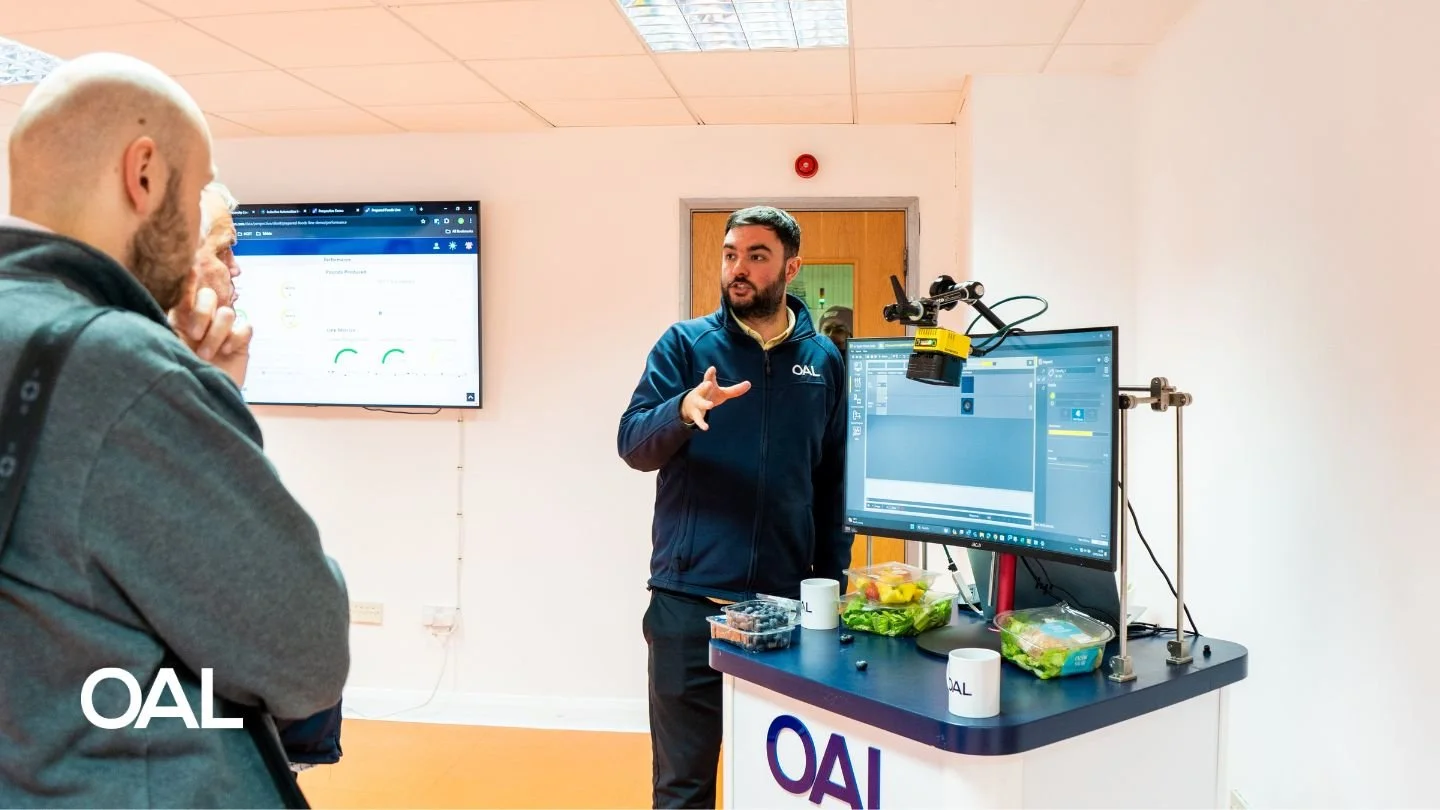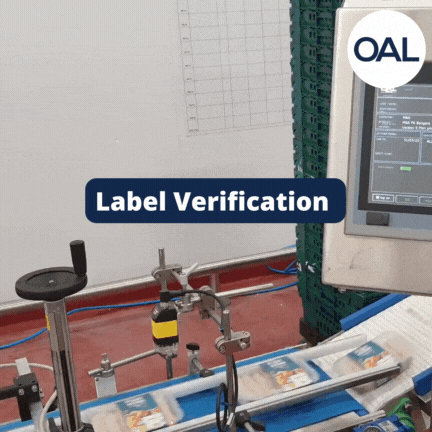Vision system pricing explained: what food manufacturers need to know
If you’re a food manufacturer exploring vision systems for your production lines, you’ve probably noticed how difficult it is to find clear, consistent pricing.
In this guide, we’ll take you through the factors that affect the price of a vision system. Does AI make it more or less expensive? Should I buy or rent a camera? Is a deep learning central server more cost effective than an AI smart camera? Every food manufacturer has its own requirements, so there isn’t a one-size-fits-all price. By the end, you’ll have a clear understanding of what drives cost, what you can control and how to choose the right setup for your production line.
What drives the cost of a vision system up
Several factors affect the overall cost of a vision system:
Line speed: High-speed lines need faster processing, controlled lighting and high-end cameras. At 60 packs per minute (ppm), you need to process an image every second; at 120ppm, you only have half a second.
Number of cameras: Each inspection point adds hardware, configuration and setup time. For instance, inspecting top and bottom labels requires two cameras.
Type of inspection: Reading date codes, verifying labels, or detecting defects all require different image processing techniques.
Inspection variability: A higher number of products (SKUs) running take longer to train and validate.
Integration level: Connecting with your line control and factory systems significantly increase the value and compliance of a system but adds engineering time.
Environment: Washdown or stainless-steel installations require specialist housings and cabling.
When can you save?
You can reduce costs when:
You’re performing simple presence or code checks.
The line runs at standard or slow speeds.
You choose a standalone setup rather than full integration.
Remote commissioning is possible.
Your environment allows a standard enclosure.
You’re checking for significant visual changes.
You only want to check 1 thing, not multiple.
Why some vision systems cost more?
Vision systems are more expensive when more powerful hardware or longer training is required. Complex inspections require more data, computing power, and time to train. Imagine training on thousands of images versus a handful or accommodating high variation on a given line. Other factors include:
Retailer compliance requirements (M&S, Tesco, etc.)
The level of support and the required response time within a service level agreement (SLA)
Additional training time for SKUs and complex inspections
Integration with automated rejection systems
While these elements increase up-front cost, they also deliver stronger compliance and ROI by reducing waste, labour, and risk. A standalone camera will simply tell you there was a defect. An integrated solution will spot the defect, automatically reject and provide the complete audit trail.
Learn how OAL have integrated vision into Ilchester Cheese Autocoding systems with complete retailer traceability. The integrated vision solution enabled the site to increase output by over 50% by automating the vision checks and rejection.
Why some systems cost less
To reduce cost, you can simplify the checks and hardware requirements and remove integration to minimise engineering time. For instance:
Use consumer-grade cameras.
Offer limited or no validation or support.
Require manual setup and configuration.
Don’t integrate with existing systems.
Typically these systems can be used for proof of concepts, but they may not be suitable for industrial applications.
Typical Vision System Pricing
Every factory has unique inspection requirements, and there are several ways to configure a vision system depending on your performance needs, integration level and budget.
Option 1: AI smart camera systems
These self-contained cameras include built-in AI processing are ideal for ever changing food manufacturing environments. They have a comprehensive set of AI based checks and can be re-trained in minutes on as few as 10 images.
Available in a range of performance levels, from entry to advanced models.
The typical cost per camera varies from £4,000 to £22,000, depending on processing power and resolution.
We typically use smart cameras for adaptable, changing environments where rapid retraining is valuable, for example, seasonal product changes or flexible packaging formats.
Option 2: GigE or networked camera systems
These cameras connect to a central on-premise or cloud-based processing server. They allow multiple cameras to be linked to a shared vision platform to complete a range of checks and inspections.
Typical licence: £350 to £500 per camera per month, covering software and AI model management.
On-premise server cost: approximately £6,000.
Setup and configuration cost: typically starts from £20,000, covering software integration, validation and training.
In 2019, we originally developed our award-winning APRIL Eye with Tesco for date code reading using networked cameras linked to a central processing server.
At OAL, we provide both smart camera and networked camera options as part of a turn-key solution, installing, commissioning, integrating and training by OAL engineers.
Together, these options give manufacturers flexibility to match cost and capability from compact, standalone cameras to validated, audit-ready systems.
Initial vs lifetime cost
When comparing systems, it’s important to look beyond the initial spend. The total cost of ownership over the system’s lifetime can vary dramatically between suppliers.
Licensing and software update models.
Reusability across lines or sites.
Downtime, reliability, and support quality.
OAL designs vision systems to minimise long-term cost through reusable hardware, continuous platform updates, and proven durability in production environments.
How pricing has changed
AI-powered inspection technology has evolved rapidly. What was once exclusive to high-end factories is now within reach for most food manufacturers.
Hardware and processing costs have dropped by around 30% over the past five years.
AI software is faster and more accurate, improving performance without increasing cost.
A system that once cost £70,000 can now be delivered for half that — without compromise on accuracy or reliability.
This means manufacturers can now access compliance-grade vision systems at a much lower entry point.
Finance and leasing
To make automation more accessible, OAL offers flexible finance options designed for food manufacturers upgrading their quality control systems.
Options include leasing packages that bundle hardware, support, and software updates without large upfront costs from as little as £180 per month.
Finance options can be tailored to project scope, helping manufacturers modernise their operations without financial strain.
Common pricing questions
-
Yes, OAL integrates both smart cameras and networked AI systems with our Autocoding system to provide vision inspection with an audit trail for retailer compliance.
-
Smart cameras can be trained in less than 15 minutes as they only require a handful of images to train. Deep learning systems can take weeks and months to train because they are trained on 1,000s of images.
-
At OAL we retrofit cameras to your existing line with pre designed brackets. Install is typically completed in less than a couple of hours to minimise line downimtime.
Next steps
Every factory has different challenges and opportunities.
Book a demo to see vision in action.
Request a tailored quote based on your line setup.
Join a food manufacturing seminar to learn from industry peers.

